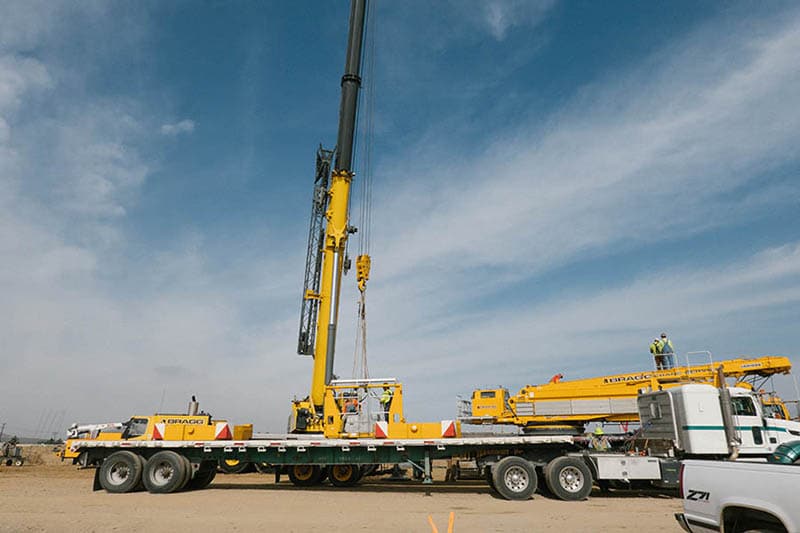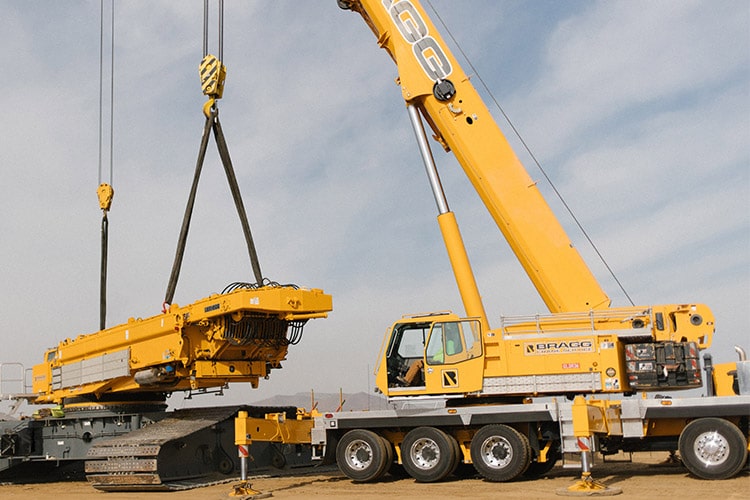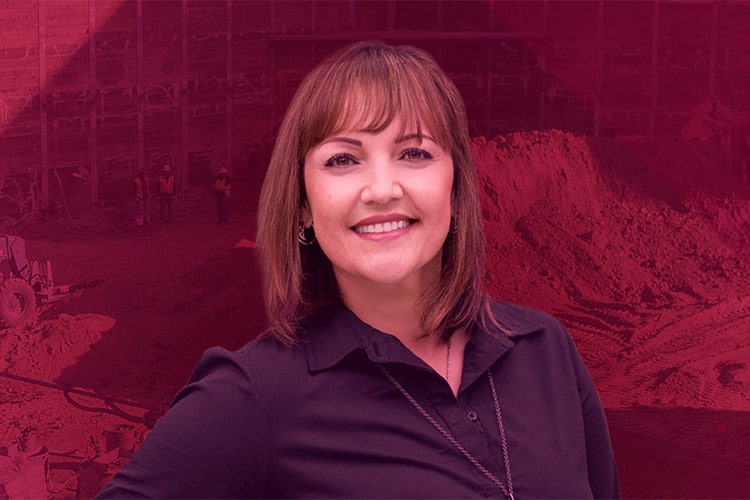Paul Livingstone is a crane operator with over 30 years of experience. When we caught up with him, he was working on a job in Rialto, California, supervising the construction of a Liebherr 1,600 crawler crane, which was going to be used to raise concrete walls for a future warehouse. The wall sections weighed roughly 270,000 pounds each. Livingstone found time, between supervising his crew, coordinating the arrival of two dozen semitrucks carrying the crane, and actually constructing the massive machine, to speak with us about his job.

Paul Livingstone, in his own words
I’m a crane tech, a crane operator, I do a little bit of rigging too, but mainly crane assembly. I work for Bragg Crane Service. I’ve been with Bragg now going on 28 years, in the crane business 33 years. It’s been a long time.
A day in the life in the crane assembly business, you don’t know what to expect until you get to the job. Every time you go to a job there’s a different challenge on getting the crane assembled, getting the equipment in and working safe. Number one priority is keeping the manpower safe, because you don’t want anybody hurt, you don’t want anyone killed. Number two is the equipment: keeping the equipment from getting damaged and keeping it maintained well so it lasts a long time. These cranes are really expensive. We’ve got to make good decisions. On my hard hat here it says, “Our profits depend on our decisions.” We make bad decisions, it’s going to cost the company money, that’s the way I look at it. Everybody needs to think about what they’re doing and make the right decisions in this business. I love doing this and like I said, I’ve been doing it a long time.
This crane here is a 1600 Liebherr crawler crane. It takes 24 semitrucks to transport. It’s going to be setting tilt walls—they weigh about 10 tons, that’s 22,000 pounds each. We’ll be doing multiple heavy picks. Most of this equipment isn’t light. We’re picking these counterweights up over and over. There’s a lot of rigging going on so you’ve got to keep your eyes open, be focused and make sure everything’s correct. You don’t want all the trucks to arrive at one time so I have to schedule the trucks according to what I think the progress is going to be on assembly.

You have to assemble the crane according to the job: the counterweight, the rigging on the parts of line. They’re going to start lifting the walls probably tomorrow. And the walls are pretty heavy, they can average about 260,000 to 270,000 pounds so that’s a lot of weight that the crane’s lifting.
What do I love most about my job? I think it’s the relationship with the crew, we go out and do the job but we also have fun doing it. We like working with each other, we all get along and have fun—it’s a fun job. Getting to know all the guys, their personalities, how hard they work, what their knowledge is and experience, I get to see all that. And I enjoy the challenge of figuring out the job. It’s not a boring job, that’s for sure.
One of my favorite projects was working for NASA in Florida at Cape Canaveral. As a kid you think about Cape Canaveral, the rockets going into space, and I never would have thought that I would be working at the launch pad where they launched the rockets into space.
Hear a portion of our conversation with Paul Livingstone on the jobsite:
In my wildest dreams I never would have thought I would be there, doing that. You never know what you’re going to lift, from a tree in somebody’s backyard to a big turbine or generator. And you get to go to different places that you don’t normally get to go to like nuclear plants, power plants, military bases. You get to see things most people don’t get to see. I put up turbines in Hawaii, in Kona and Maui. To be able to travel too and see the country, I enjoy that.















